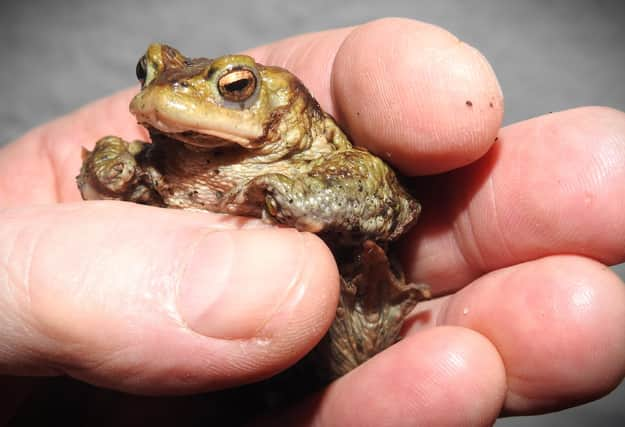On The Wildside: Common toads will travel quite a distance to suitable ponds


However, there are still big problems with urbanisation, new roads and developments, and fragmentation of essential habitats. Predation of tadpoles by newt populations seems to be a further pressure on already declining frogs and toads. The overall situation does mean that wildlife ponds and other suitable habitats in gardens make a big difference to potential breeding and survival, and in this respect, the many gardeners across the region can help. It is worth remembering that these amphibians not only need breeding ponds, but also suitable habitats for feeding in summer and for hibernation in winter. Furthermore, some animals, particularly common toads, will travel quite a distance from their wintering sites to suitable ponds, and this can mean crossing quite unsuitable and dangerous terrain. In this case, we can render assistance by watching out and ‘helping a toad across the road’. Traditional pinch points in the landscape can result in large numbers, especially of toads, crossing roads and lanes with many ending up squashed on the tarmac. Simply keeping an eye on your local patch if amphibians crossing are likely, can make a big difference. Toad rescue is easy although if you handle them for more than a couple of minutes whilst transporting them to a safe location, expect to get wet. Toads secrete chemicals from their skin to put off would-be predators, but they also urinate on captors to trigger a quick release!
I found the small, male toad close to where I live and took it from the road into my wildlife garden where I released it. Hopefully, this increased its chances of survival, and each one saved helps the overall population. On our lane there used to be hundreds of toads crossing where now any at all is cause for celebration.
Advertisement
Hide AdAdvertisement
Hide AdProfessor Ian D. Rotherham, researcher, writer & broadcaster on wildlife & environmental issues, is contactable on [email protected]; follow Ian’s blog (https://ianswalkonthewildside.wordpress.com/) and Twitter @IanThewildside